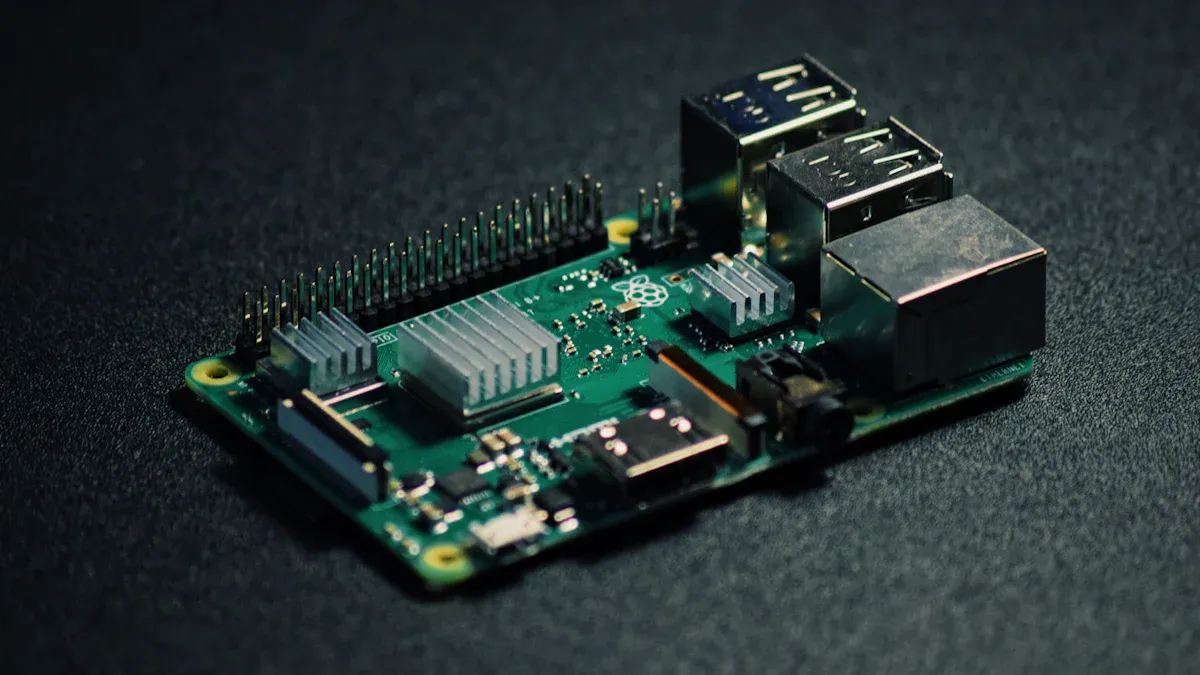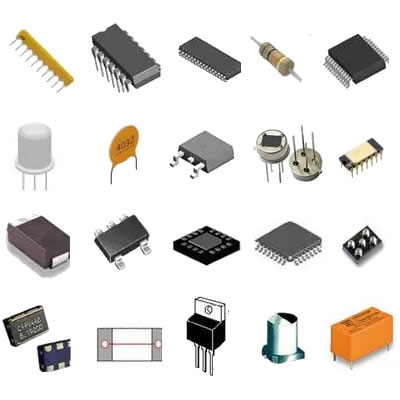What is the current situation of the CFR-25JB-52-1M2 industry?
What is the current situation of the CFR-25JB-52-1M2 industry?
The CFR-25JB-52-1M2 industry reflects a stable growth trajectory, supported by its reliable carbon film technology. Manufacturers have adopted advancements like laser patterning, which reduces costs and lead times. Key innovations include:
1. Transitioning from photo-lithography to laser-based manufacturing.
2. Eliminating precious metals for sustainability.
3. Enhancing energy efficiency and material performance.
These developments align with environmental standards, ensuring compliance and reliability. The resistor's ability to operate across a wide temperature range further strengthens its position in the current situation of the electronics market.
Key Takeaways
- The CFR-25JB-52-1M2 industry is growing at a steady pace. It is expected to grow by 5-7% each year. This growth comes from demand in electronics, cars, and clean energy.
- Companies are using new technologies like laser tools to work better. These changes help save money and make products perform well.
- Problems in supply chains create challenges for companies. To fix this, they can use more suppliers and build factories nearby. This helps keep production steady.
Market Overview
### Current market size and growth rate
The CFR-25JB-52-1M2 industry has shown consistent growth over the past few years. Analysts estimate the global carbon film resistor market to be valued at several billion dollars, with a compound annual growth rate (CAGR) of approximately 4-6%. This growth reflects the increasing adoption of carbon film resistors across various industries, including consumer electronics, automotive, and telecommunications. The current situation highlights a steady demand for these components, driven by their reliability, cost-effectiveness, and adaptability to diverse applications.
Major players in the CFR-25JB-52-1M2 industry
Several key players dominate the CFR-25JB-52-1M2 industry, contributing to its robust market presence. Companies such as Yageo Corporation, Vishay Intertechnology, and Panasonic Industry lead the market with their innovative product offerings and extensive distribution networks. Other notable manufacturers include KOA Speer Electronics and TE Connectivity, which focus on enhancing product performance and meeting the evolving needs of end-users. These companies invest heavily in research and development to maintain their competitive edge in the current situation.
Key sectors driving demand for carbon film resistors
The demand for carbon film resistors stems from their critical role in various sectors:
- The **consumer electronics** sector drives significant demand, fueled by the proliferation of smartphones, laptops, and wearable devices.
- The **automotive** industry relies on these resistors for electric vehicles (EVs) and advanced safety systems.
- The **telecommunications** sector benefits from their use in 5G infrastructure, including routers and base stations.
- Other sectors, such as **aerospace**, **medical devices**, and **renewable energy**, also contribute to the growing demand due to their need for reliable and efficient components.
These sectors underscore the versatility and importance of carbon film resistors in modern technology.
Key Challenges
### Supply chain disruptions affecting availability
The CFR-25JB-52-1M2 industry faces significant challenges due to supply chain disruptions. Global events, such as geopolitical tensions and natural disasters, have caused delays in the procurement of raw materials. Manufacturers struggle to maintain consistent production schedules, leading to extended lead times for customers. Additionally, the reliance on a limited number of suppliers for critical components exacerbates the issue. Companies must adopt strategies like diversifying their supplier base and investing in local manufacturing to mitigate these disruptions.
Regulatory and compliance hurdles in the electronics industry
Strict regulations in the electronics industry present another challenge for the CFR-25JB-52-1M2 sector. Governments worldwide enforce stringent standards to ensure product safety and environmental sustainability. Compliance with directives such as RoHS (Restriction of Hazardous Substances) and REACH (Registration, Evaluation, Authorization, and Restriction of Chemicals) requires significant investment in testing and certification. Smaller manufacturers often find it difficult to meet these requirements, which limits their ability to compete. Staying updated on regulatory changes and adopting eco-friendly practices can help companies navigate these hurdles effectively.
Rising competition and market saturation
The growing popularity of carbon film resistors has led to increased competition among manufacturers. New entrants in the market, combined with the presence of established players, have created a highly competitive environment. Market saturation in certain regions further intensifies the pressure on companies to differentiate their products. To remain competitive, businesses must focus on innovation, cost optimization, and customer-centric solutions. The current situation demands a proactive approach to stand out in this crowded marketplace.
Opportunities and Innovations
### Emerging technologies in carbon film resistors
The carbon film resistor industry is witnessing significant advancements in technology. Manufacturers are adopting laser patterning techniques, which simplify production and reduce lead times compared to traditional methods. Automated equipment is also improving process controls and increasing production efficiency. These innovations align with the industry's focus on sustainability and energy efficiency.
The expansion of the electric vehicle (EV) market is driving demand for high-performance resistors. Similarly, the rise of IoT and smart devices has created a need for compact, energy-efficient components. Miniaturization of electronic parts is another emerging trend, enabling resistors to meet the requirements of modern devices. Projections indicate that the market for carbon film resistors could reach $2.1 billion by 2028, reflecting the impact of these technological advancements.
New applications in electronics and other industries
Carbon film resistors are finding applications beyond traditional electronics. In the automotive sector, they play a critical role in electric vehicles and autonomous driving systems, particularly in battery management and safety features. The industrial sector relies on these resistors for automation, robotics, and IoT devices in smart manufacturing.
In aerospace, carbon film resistors are essential for avionics and navigation systems due to their reliability and precision. Medical devices, such as diagnostic equipment and patient monitoring systems, also benefit from their efficiency. Additionally, renewable energy systems, including solar and wind power, utilize these resistors for their durability under varying conditions. These diverse applications highlight the versatility of carbon film resistors in addressing the needs of multiple industries.
Investment trends and funding for innovation
Investment in the carbon film resistor industry is growing as companies prioritize innovation. Leading manufacturers are channeling funds into research and development to enhance product performance and sustainability. For instance, Vishay Intertechnology recently introduced a new series of resistors designed for automotive and industrial applications, showcasing improved performance at high temperatures.
The current situation reflects a shift toward funding technologies that support energy efficiency and environmental compliance. Emerging markets, particularly in Asia, are attracting significant investments due to their high demand for consumer electronics and renewable energy solutions. These trends underscore the industry's commitment to innovation and its ability to adapt to evolving market demands.
Regional Analysis
### Current situation in North America
North America remains a significant market for the CFR-25JB-52-1M2 industry. The region benefits from a strong presence of established manufacturers and a robust demand for electronic components. The automotive and telecommunications sectors drive much of this demand, particularly with the rise of electric vehicles and 5G infrastructure. Companies in the United States and Canada continue to invest in advanced manufacturing technologies, ensuring high-quality production standards. The current situation reflects a stable market environment, supported by government initiatives promoting innovation in electronics.
Trends and developments in Europe
Europe has emerged as a leader in sustainable and eco-friendly practices within the CFR-25JB-52-1M2 industry. Manufacturers in countries like Germany and France prioritize compliance with stringent environmental regulations, such as RoHS and REACH. The region also sees growing adoption of carbon film resistors in renewable energy systems, including wind and solar power. Additionally, the automotive sector in Europe, particularly in electric and hybrid vehicles, contributes significantly to market growth. Collaborative efforts between industry players and research institutions further enhance technological advancements in the region.
Growth opportunities in Asia-Pacific and other regions
Asia-Pacific represents the fastest-growing market for carbon film resistors. Countries like China, Japan, and South Korea dominate production and consumption due to their thriving electronics and automotive industries. The region's focus on consumer electronics, including smartphones and IoT devices, drives substantial demand. Emerging economies in Southeast Asia also present untapped opportunities, with increasing investments in industrial automation and renewable energy. Beyond Asia-Pacific, regions like the Middle East and Africa show potential for growth, particularly in telecommunications and infrastructure development.
Future Outlook
### Predictions for market growth and demand
The CFR-25JB-52-1M2 industry is expected to maintain steady growth over the next decade. Analysts project a compound annual growth rate (CAGR) of 5-7%, driven by increasing demand in sectors such as consumer electronics, automotive, and renewable energy. The rise of electric vehicles and advancements in 5G infrastructure will further boost the need for carbon film resistors. Emerging markets in Asia-Pacific and Africa are likely to contribute significantly to this growth, as industrialization and technological adoption accelerate in these regions. The current situation suggests that manufacturers focusing on innovation and sustainability will capture a larger market share.
Potential technological breakthroughs in resistor technology
Technological advancements in the resistor industry are poised to revolutionize the market. Researchers are exploring the use of nanomaterials to enhance the performance and durability of carbon film resistors. These materials could enable resistors to operate efficiently under extreme conditions, such as high temperatures or fluctuating voltages. Additionally, the integration of artificial intelligence (AI) in manufacturing processes promises to improve quality control and reduce production costs. Miniaturization remains a key focus, as industries demand smaller, more efficient components for modern devices. These breakthroughs will likely redefine the capabilities of carbon film resistors in the coming years.
Expert opinions on the industry's trajectory
Industry experts predict a promising future for the CFR-25JB-52-1M2 sector. According to Dr. Emily Carter, a leading electronics researcher, the industry's ability to adapt to evolving technological demands will determine its long-term success. She emphasizes the importance of sustainability and compliance with environmental regulations. Similarly, market analyst John Reynolds highlights the role of emerging markets in driving demand. He believes that manufacturers investing in innovation and regional expansion will gain a competitive edge. These insights underscore the industry's potential for growth and its capacity to overcome challenges.
The CFR-25JB-52-1M2 industry demonstrates strong potential for growth. Its high-quality construction and versatility across sectors like automotive and medical devices ensure stable demand. Compliance with environmental standards enhances its appeal. Despite supply chain challenges, the current situation highlights opportunities in emerging markets and innovations that will shape its future trajectory.
FAQ
### What is the primary advantage of carbon film resistors like CFR-25JB-52-1M2?
Carbon film resistors offer high reliability, cost-effectiveness, and adaptability. Their ability to operate across wide temperature ranges makes them ideal for diverse applications in electronics and automotive industries.
How do supply chain disruptions impact the CFR-25JB-52-1M2 industry?
Supply chain disruptions delay raw material procurement and production schedules. This results in extended lead times, affecting manufacturers' ability to meet customer demands efficiently.
Which industries benefit most from carbon film resistors?
Consumer electronics, automotive, and telecommunications industries benefit significantly. These resistors also play critical roles in aerospace, medical devices, and renewable energy systems due to their reliability and efficiency.






